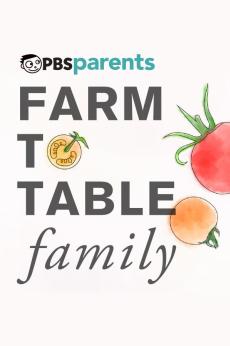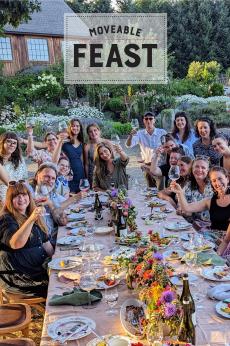Cranberries in Massachusetts
Indigenous people have harvested and eaten wild cranberries for millennia. European settlers started cultivating cranberries in Massachusetts in 1816, and the berry remains an integral part of the Bay State’s landscape. Capri learns how indigenous groups use cranberries in traditional cooking, helps out at a family-owned cranberry bog on Cape Cod and samples various cranberry-inspired dishes.
Episodes
-


Cranberries in Massachusetts
S1 E113 - 26m 46s
Indigenous people have harvested and eaten wild cranberries for millennia. European settlers started cultivating cranberries in Massachusetts in 1816, and the berry remains an integral part of the Bay State’s landscape. Capri learns how indigenous groups use cranberries in traditional cooking, helps out at a family-owned cranberry bog on Cape Cod and samples various cranberry-inspired dishes.
-


Cheese & Beer in Wisconsin
S1 E112 - 26m 46s
Wisconsin is known for its cheese — and its beer. Both serve as a guide to how German and Swiss immigrants shaped the culture of Wisconsin we enjoy today. We meet one of the first women to own a brewery, artisan cheesemakers whose grass-fed cows bring Wisconsin terroir to life.
-


Maple Syrup in Vermont
S1 E111 - 26m 46s
One of the oldest food traditions in America is tapping trees for sap and boiling it down for the prized maple syrup. Vermont has long been a mecca for the practice and is now innovating in incredibly fun and delicious ways. Capri learns from a family who use traditional methods to harvest sap and make syrup and gets a glimpse of how maple producers are experimenting with flavors.
-


Pecans in Georgia
S1 E110 - 26m 46s
The Algonquin coined the term pecan from the word "pacane," which means a nut that needs to be cracked with a stone. By the 1950s, Georgia was the country's leading producer of pecans and remains the largest producing state. Capri meets civil rights activists and founders of the New Communities Agricultural Co-Op, who explain the important role of African-American farmers in the pecan industry.
-


Ramps in West Virginia
S1 E109 - 26m 46s
Known as spring onions, ramsons, wild leeks, wood leeks and wild garlic, North American ramps have been celebrated in Appalachia for centuries. There is a strong tradition of foraging various greens, mushrooms and wild vegetables. Capri forages for ramps in the West Virginian hills with a local family and celebrates the self-sufficient nature of Appalachian culture.
-


Corn in Arizona
S1 E108 - 26m 46s
Corn is a sacred food for all indigenous tribes of Arizona. Many original varieties of corn have been lost since the time of colonization, but a handful of farmers and organizations are creating a variety of memorable ancient and modern foods from blue, yellow and red flour-making maize. Capri learns how seeds are saved, visits a garden of living history and helps make blue corn cakes.
-


Blue Crabs in Maryland
S1 E107 - 26m 46s
Maryland is synonymous with crabs, dating back to the 17th century. Crabs of many varieties are plentiful in the waters of the Chesapeake Bay and people from all walks of life enjoy this popular crustacean. Capri harvests crabs off Maryland’s Eastern Shore with an all-female crabbing crew and enjoys a crab feast with two sisters who started a crab business in Baltimore.
-


Pheasants in South Dakota
S1 E106 - 26m 46s
There is a long tradition of hunting wild game in the Plains. Capri travels to South Dakota for pheasant season, which locals and visitors welcome each year. Capri witnesses a pheasant hunt and samples a famous pheasant sandwich that can trace its origins back to World War II.
-


Apples in Virginia
S1 E105 - 26m 46s
No fruit helped build America more than the apple. Recently, there’s been a movement to return to some of the original varieties that apple connoisseurs say taste better than what is typically found in grocery stores today. Discover the story of the apple by visiting with a horticultural historian from Monticello and a foodways interpreter who brings the stories of enslaved persons to life.
-


Chiles in New Mexico
S1 E104 - 26m 46s
Chiles, the backbone of Southwestern cuisine, are celebrated throughout the region. Through a colorful New Mexico road trip, we trace the history and current state of chiles from Santa Fe to Hatch and beyond. Capri is hosted by a multigenerational farm family both in the field and in the kitchen, stops by a roadside haunt that serves chiles in everything and helps judge a chiles tasting contest.
-


Oysters in South Carolina
S1 E103 - 26m 46s
Explore the storied history of the oyster in modern-day South Carolina. The first Americans enjoyed it and it remains a critical ingredient in Gullah Geechee foodways. Capri harvests oysters with members of the Gullah community, enjoys a traditional Gullah oyster dish and shucks oysters alongside women who have been perfecting the art of hand shucking for generations.
-


Pears in Oregon
S1 E102 - 26m 46s
In 1847, an Iowa native brought pears into Oregon. In 2005, the Oregon legislature named the pear the state fruit as Oregon’s climate and soil allow pears of many varieties to thrive. Capri visits an orchard owned by a Japanese American family whose founders were held captive in an internment camp during WWII and she learns different ways pears can be prepared
Schedule
WETA Passport
Stream tens of thousands of hours of your PBS and local favorites with WETA Passport whenever and wherever you want. Catch up on a single episode or binge-watch full seasons before they air on TV.
Similar Shows

tasteMAKERS
Food

Farm to Table Family
Food

America's Heartland
Food

Essential Pepin
Food



Moveable Feast
Food


Tacos of Texas
Food

Baking With Julia
Food